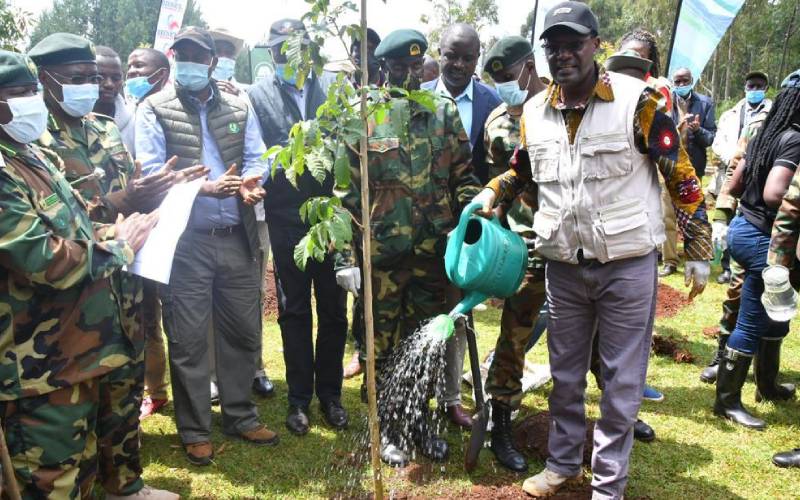×
The Standard e-Paper
Kenya’s Boldest Voice

Environment and Forestry PS Dr Chris Kiptoo (left) participates in a tree planting event. [Courtesy]
Some 350,000 seedlings are set to be planted in this year’s annual Kaptagat tree planting event.